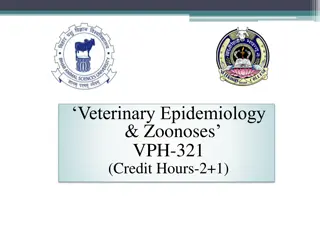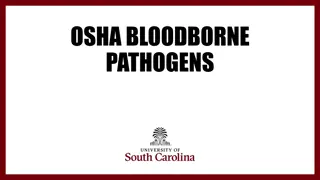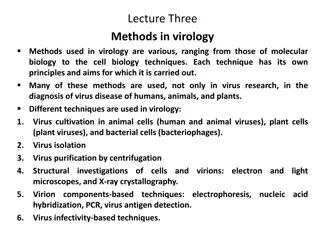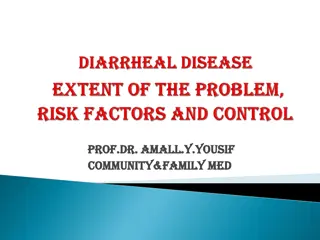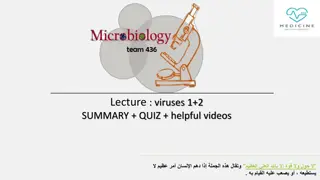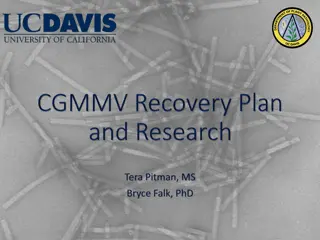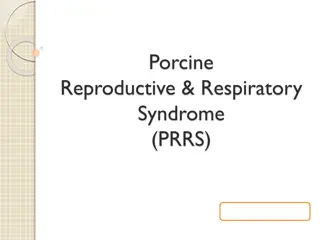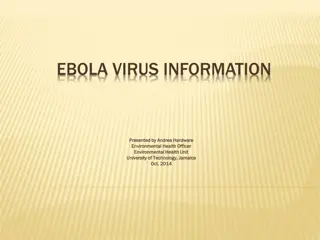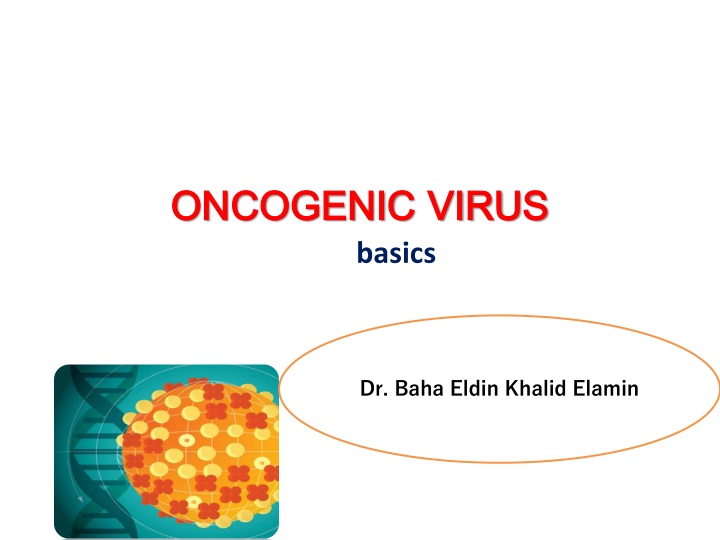
Oncogenic Viruses and Their Role in Cancer Development
Explore the mechanisms by which oncogenic viruses enter the host's body and cause cellular transformation, leading to cancer development. Learn about the impact of viral agents on critical regulatory genes and the significance of oncoviruses in cancer research.
Download Presentation

Please find below an Image/Link to download the presentation.
The content on the website is provided AS IS for your information and personal use only. It may not be sold, licensed, or shared on other websites without obtaining consent from the author. If you encounter any issues during the download, it is possible that the publisher has removed the file from their server.
You are allowed to download the files provided on this website for personal or commercial use, subject to the condition that they are used lawfully. All files are the property of their respective owners.
The content on the website is provided AS IS for your information and personal use only. It may not be sold, licensed, or shared on other websites without obtaining consent from the author.
E N D
Presentation Transcript
ONCOGENIC VIRUS ONCOGENIC VIRUS basics Dr. Baha Eldin Khalid Elamin
Viruses enter the body of the host in a variety of ways, for example...
Routes of entry: Inhalation ingestion Blood organ t/plant inoculation Congenital / vertical sexual
What is Cancer Cancer results from alterations in critical regulatory genes proliferation, differentiation, and survival. Studies of tumor viruses revealed that specific genes (called oncogenes) are capable of inducing cell transformation, thereby providing the first insights into the molecular basis of cancer. that control cell
How virus causes Cancers: How virus causes Cancers: The viral agents causing cancer in eukaryotic animals by integrating in host *A virus associated with malignancies in natural host, experimental animals or cell *viruses which oncogene, obligatory host specific, with the ability immortalization, possess genes which stimulate growth and cause cancer. genome cultures. proto- modified
Oncovirus An oncovirus is a virus that can cause cancer. This term originated from studies of acutely-transforming retroviruses in the 1950 60s, oncornaviruses to denote their RNA virus origin. It now refers to any virus with a DNA or RNA genome causing cancer and is synonymous with "tumor virus" or "cancer virus". often called
by transforming cells cancer When a virus infects a cell, it expresses proteins that cause the cell to proliferate and/or block apoptosis Cancer is multi-factorial: Oncogenic viruses are very common, only a small % of people infected actually get cancer
Major viral cancers Viruses are involved in about 15% of human cancers: Cancer of the cervix Cancer of the liver Certain leukemia's & lymphomas Kaposi s sarcoma
Classification Classification Oncovirus DNA oncogenic viruses RNA oncogenic viruses
Major human Oncogenic Viruses DNA Viruses Small DNA tumor viruses - Human Papilloma virus (HPV) Herpesviruses (large) - Epstein Barr virus (EBV) - Kaposi s Sarcoma Herpesvirus (KSHV) Other - Hepatitis virus B RNA viruses Hepatitis virus C
How do Viruses contribute to cancer? Integrations that cause activation or inactivation of oncogenes or tumor suppressors (e.g. RNA viruses) Expression of genes that alter key signal transduction pathways Chronic activation of inflammatory responses
Cancer Genes Proto-oncogenes normally promote normal cell growth; mutations convert them to oncogenes. Tumor suppressor genes normally restrain cell growth; loss of function results in unregulated growth. Mutator or DNA repair genes when faulty, result in an accumulated rate of mutations.
DNA Tumor Viruses In Human Cancer Papilloma Viruses urogenital cancer carcinoma wart malignant squamous cell Papilloma viruses are found in 91% of women with cervical cancer 10% of human cancers may be HPV-linked
DNA Tumor Viruses In Human Cancer Herpes Viruses Considerable evidence for role in human cancer Some very tumorigenic in animals Viral DNA found in small proportion of tumor cells: hit and run Epstein-Barr Virus Burkitt s Lymphoma Nasopharyngeal cancer Infectious mononucleosis Transforms human B-lymphocytes in vitro
Human Papillomavirus (HPV) Human Papillomavirus (HPV) is a double-stranded DNA virus of the family Papovaviridae. It infects only epithelial cells in humans such as skin and mucus membranes. It can affect the lower genital tract including the vulva, vagina, urethra, penis, anal canal and perianal skin
Epstein Barr virus Pathologies in immuno-competent individuals Infectious mononucleosis Burkitt s Lymphoma Hodgkin s lymphoma Nasopharyngeal carcinoma Pathologies in immuno-compromised individuals Post-transplant lymphoproliferative diseases (PTLD) Hodgkin s lymphoma A variety of non-Hodgkin s lymphoblastic malignancies
Epstein-Barr virus (Human herpes virus 4) EBV is the herpes virus that is most strongly associated with cancer. It infects primarily lymphocytes and epithelial cells. In lymphocytes, the infection is usually non- productive, while virus is shed (productive infection) from infected epithelial cells.





